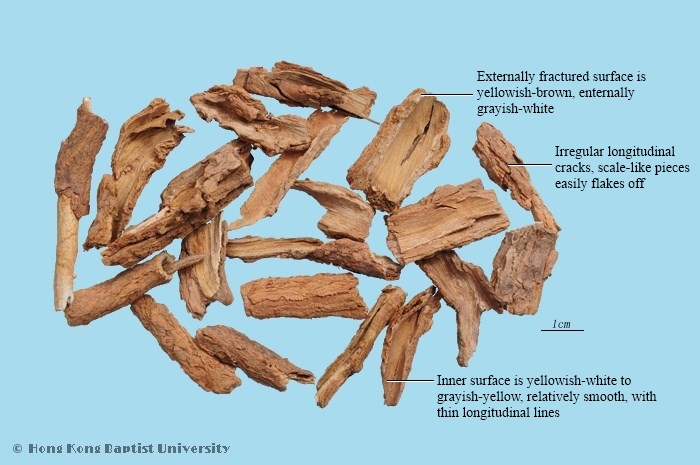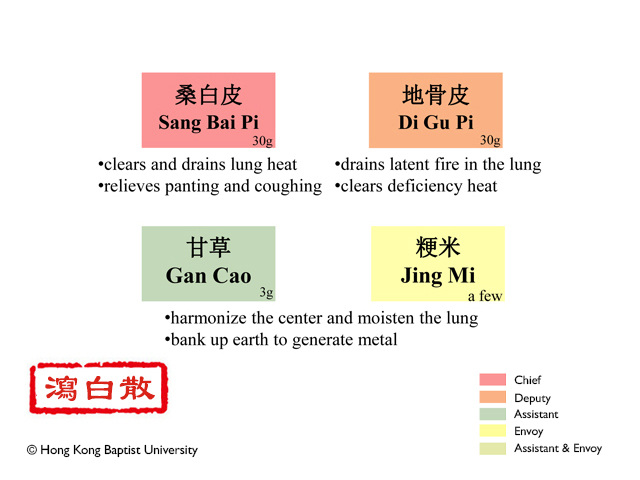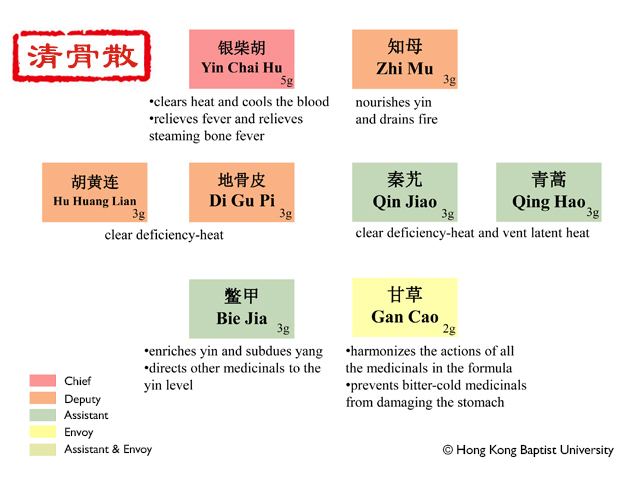Bone-Clearing Powder
Action:Clears deficiency-heat and relieves steaming bone fever.
Indication:This formula is indicated for deficiency of the liver and kidney yin, and deficiency-heat harassing the interior. The symptoms are steaming bone fever, prolonged low-grade fever, emaciation, red lips and cheeks, fatigue and night sweat, thirst and vexation, a red tongue with a scanty coating, and a thready, rapid pulse.


